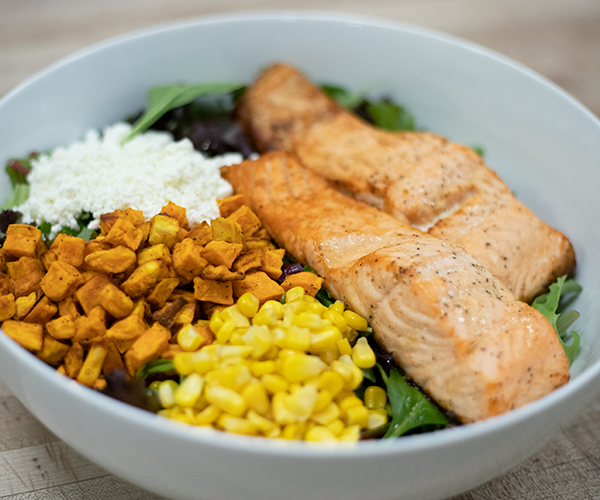Roquefort Cheesecake with Asian Pear
(Serves 8 to 10)
Asian pears have a distinctly sweet pearlike taste with the crisp texture of an apple, making them ideal candidates for poaching. Growing rapidly in popularity, they make a regular appearance in produce bins across Northeast Ohio. Adapt this recipe seasonally by substituting apples or quince in the fall and winter seasons.
For the walnut crust
1 1/2 cups finely chopped walnuts
1/2 cup all-purpose flour
2 tablespoons unsalted butter, room temperature
1 tablespoon lemon zest
For the cheesecake
3 ounces Roquefort cheese
8 ounces cream cheese, softened
2 tablespoons freshly grated Romano cheese
12 teaspoon salt
Pinch of white pepper
1 tablespoon lemon juice
2 large eggs, room temperature
1/4 cup sour cream
To make the walnut crust: Preheat oven to 375 degrees. Combine the walnuts, flour, butter and lemon zest until a soft, crumbly dough forms. Press into the bottom of a springform pan. Bake for 10 minutes. Remove from the oven and set aside.
To make the cheesecake: Reduce the oven to 300 degrees. (Do not use a convection feature for this recipe.) Place a small ovenproof pan on the bottom shelf of the oven and fill halfway with boiling hot water. Place the Roquefort and cream cheese in a large mixing bowl. Beat until smooth and completely blended, about 5 minutes. Combine the Romano cheese, salt and pepper and add to the cheese mixture, mixing until just combined. Scrape the bottom of the bowl occasionally to make sure the mixture is smooth. Slowly add the lemon juice and the eggs, one at a time, beating until completely blended. Add the sour cream and mix until just combined.
Pour the mixture into the prepared springform. Place on the middle shelf of the oven and bake until just firm, checking after 30 minutes. When done, the middle of the cheesecake will jiggle but the outer edges will appear firmer. Remove from oven and cool completely. Serve at room temperature with a drizzle of poaching syrup and pear slices.
Asian Pears Poached in Verjus
2 ripe, firm Asian pears, cut into thin slices
2 cups Riesling
2 cups verjus
1/2 cup water
2/3 cup sugar
2 tablespoons honey
Half of a vanilla bean
1/2 teaspoon black peppercorns
Combine all ingredients in a small, nonreactive saucepan. Cut a piece of parchment paper to cover the surface of the liquid inside the pot. Slowly bring liquid to a low simmer and cook until the Asian pears are soft and can be pierced easily with the tip of a sharp knife, about 10 minutes. Remove fruit from poaching liquid and cool.
Remove the vanilla bean from the liquid. Return the saucepan to the heat and bring to a boil. Continue cooking until liquid is reduced to one cup and is thick and syrupy.
Return the pear slices to the syrup and let cool to room temperature.
WINE PAIRING
“This dish calls for a red wine with the blue cheese; but rather than a luscious red to complement the textures, I recommend a highly acidic red to contrast and cut through the texture. I would choose a young, bright central coast Pinot Noir with this dish. Specifically, Asian pear has such a pleasant sweet flavor that it acts as a counterpoint to the tartness of the verjus. A full-bodied low-acid wine would come off flat, uninteresting and segmented from start to finish.”
— Chris Oppewall, sommelier



